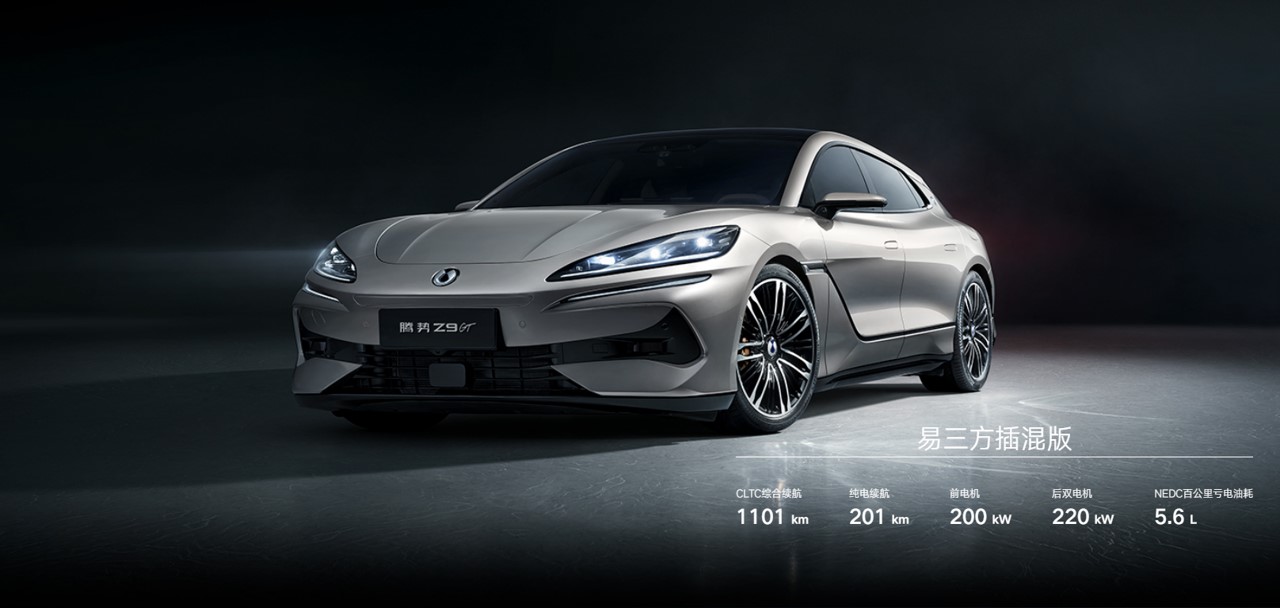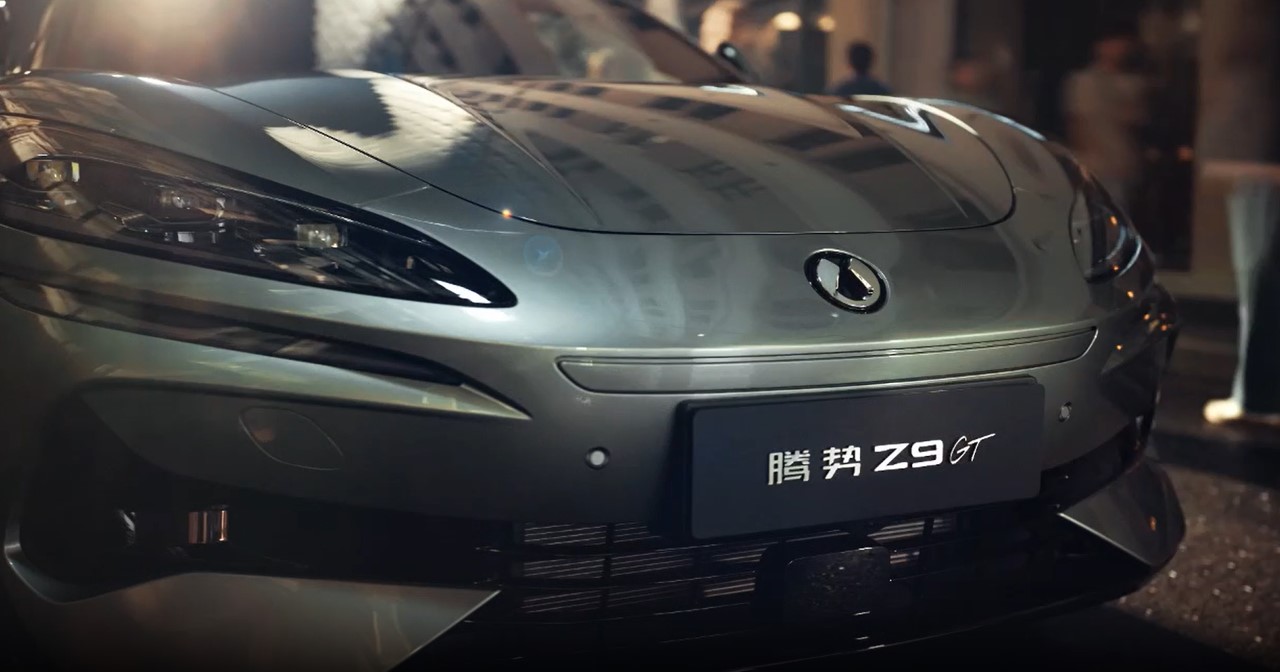In May of this year, BYD launched its fifth-generation DM technology, which covers its sedan and SUV models, further enhancing the core technology, efficiency, and performance of BYD electric vehicles. In August, the release and application of the e3 technology platform further strengthened the competitiveness of its Denza brand in the luxury market.
With the successive introduction of innovative technologies such as the e-platform 3.0 EVO, the fifth-generation DM technology, and the e3 whole vehicle intelligent control technology, BYD has formed a series of platform technologies including DM-i, e4, e3, DMO, DM-p, DM-i, etc., covering the technical platform of the entire BYD vehicle range.
Among them, the e3 technology, as BYD's world-first three-motor independent drive system, is built based on the company’s whole vehicle intelligent strategy. With the combination of rear wheel dual-motor differential torque distribution and dual-motor independent steering, it can achieve functions such as compass turning, intelligent crab walking, high-speed tire blowout stable control, and 4.62-meter ultimate steering.
Currently, this technology is equipped on the Denza Z9GT, fully demonstrating the strong controllability of BYD's luxury brand Denza under extreme road conditions, and its technical details have also attracted attention in the industry.
According to Dr. Lu Guoxiang, Deputy Director of the Dual-Mode Platform Architecture Design Center at BYD's New Technology Research Institute, "The development of the e3 platform stems from an in-depth insight into various safety hazards and usage pain points during driving. For example, vehicles are prone to skidding on icy roads in the north or rainy roads in the south; when there is a sudden obstacle to avoid while driving at high speed, or when a tire blowout occurs on the highway; when there are multiple turns and limited parking capabilities in narrow lanes, and so on."
As the automotive industry fully develops towards electrification and intelligence, bringing ultimate sports performance and driving experience to users through technological innovation has become one of the important goals pursued by luxury brands integrating intelligence and electricity.
Lu Guoxiang said that in order to successfully develop the e3 platform, BYD has organized thousands of engineers to conduct R&D for five years. BYD's R&D team has overcome many technical difficulties in the development process, and has ultimately achieved breakthrough innovative results in safety, intelligence, flexibility, and other aspects.
E3, achieving integrated control of three-motor independent drive and rear wheel dual-motor independent steering, has experienced two key technical difficulties:
First, the integrated control of rear wheel dual-motor independent steering and three-motor independent drive. BYD's R&D team calculates based on the theoretical models of the two aspects, and obtains basic data through simulation. Based on this data, real-vehicle experiments are conducted to determine the optimal control scheme.
Second, how to make the vehicle adapt to different road-adhesion surfaces. BYD's R&D team has conducted repeated tests on roads with different road adhesion coefficients in various application scenarios such as streets, alleys, and garages, to ensure that the functions can meet the common scenarios that users often encounter.
Currently, the intelligent crab walking function of the e3 technology can achieve diagonal movement and calmly avoid obstacles. Thanks to the independent steering of the rear dual-motor and the differential control of the rear dual-motor, the Denza Z9GT equipped with e3 can achieve a crab walking angle of up to a world-record of 15 degrees.
In addition to bringing more driving fun to car owners, more importantly, e3 can bring more safety protection to car owners under extreme working conditions and road conditions.
For example, in terms of low road-adhesion surface stability enhancement systems, e3 can maintain stability on low road-adhesion surfaces such as ice, snow, and water through real-time active adjustment of rear dual-motor torque and the inner-eight posture of rear wheel independent steering. Similarly, in emergencies such as high-speed tire blowouts, this technology can quickly identify the vehicle's state, respond at the millisecond level to adjust the wheel end torque, keep the vehicle stable, and at the same time, combine intelligent driving to recognize lane lines, reduce vehicle deviation, and avoid secondary accidents to the greatest extent.

At present, BYD has taken the lead in the field of plug-in hybrid and electric drive technology in the automotive industry. However, BYD has not given up on the research and development of engine technology. In the development of the fourth-generation DM technology, BYD has paid more attention to the development of engines in plug-in hybrid power. Currently, BYD's New Technology Research Institute has formed a series of platform technologies including DM-i, e4, e3, DMO, DM-p, DM-i, etc., covering the technical platform of the entire BYD vehicle range.
With the emergence of intelligent technology, the application of algorithms and software of many AI new technologies will also bring upgrades and endorsements to the hardware system or hardware components. Joint innovation will be a very important direction and trend for future development.
"This is just the progress from 0 to 1. In the future, we still need to move towards the goal from 1 to 100, and there is a long way to go," said Lu Guoxiang.
In November, BYD sold 504,003 electric passenger cars, a year-on-year increase of 67.2%, and has exceeded 500,000 monthly sales for two consecutive months. From January to November of this year, BYD has achieved a cumulative sales volume of 3,740,930 electric passenger cars, far exceeding last year's annual sales volume of 3,033,662 vehicles. The sales volume for the whole year of 2024 is expected to exceed 4 million vehicles. Among them, Denza brand sold 10,002 vehicles in November, and the cumulative sales volume in 2024 has also reached 110,976 vehicles.
On November 18th, BYD's 10 millionth electric vehicle, the Z9, rolled off the production line, making BYD the first car company to reach a cumulative production of 10 million electric vehicles in the world.










